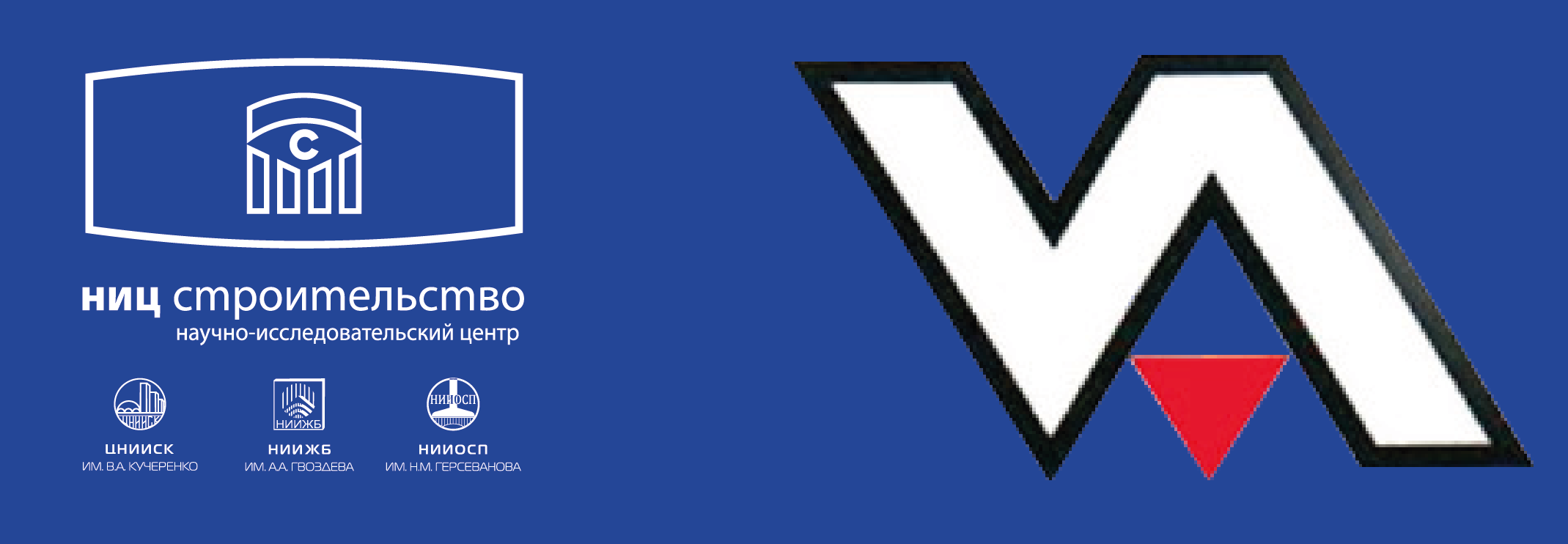Experience of using numerical calculations of thermally stressed state of concrete during freezing and thawing of samples as per State Standard 10060-2012
https://doi.org/10.37538/0005-9889-2025-3(628)-40-51
EDN: MDMMNA
Abstract
Introduction. Based on the experimental studies of the frost resistance of concrete according to the accelerated third method of State Standard 10060-2012 (with Change No. 1) with various methods of samples thawing, the coefficients of transition (K) from the grade of concrete frost resistance determined during thawing under conditions of incomplete immersion of sample containers in a solution of 5 % sodium chloride or when blowing sample containers with warm air, to the grade of concrete determined by the standard method of thawing samples in a bath with a solution of 5 % sodium chloride. The calculation method of the thermally stressed state of concrete has shown that a change in the methodology for concrete testing for the frost resistance, including the method of thawing samples after freezing, can lead to an unreliable assessment of the quality of concrete.
Aim. The numerical calculation of the thermally stressed state of the tested cube samples was performed in order to identify the features of various methods of concrete samples thawing after freezing and to refine the developed transition coefficients for assigning a grade of concrete for frost resistance.
Materials and methods. A numerical calculation of the process of concrete samples freezing and thawing during the frost resistance test using the accelerated third method according to State Standard 10060-2012 (with Change No. 1) in the ATENA software package has been performed. Based on the results of calculating the theoretical temperature values, the temperature differences between the core and the surface of the cubes were determined and the maximum tensile stresses on their surface were determined at the time of the greatest temperature differences.
Results. Numerical calculation of the thermally stressed state of the tested samples during freezing and various thawing modes when determining the frost resistance of concrete using the accelerated third method confirmed the results of experimental laboratory work and showed that the thawing mode when sample containers are not fully immersed in the solution differs qualitatively from the other thawing methods considered and is the most "rigid" due to the possibility of formation of surface cracks on the concrete surface of the samples during the testing process.
Conclusions. The experience of applying numerical calculations of the thermally stressed state of the tested samples has shown that, as experimental data accumulate, they can be used to predict the frost resistance of concrete.
About the Authors
A. V. BuchkinRussian Federation
Andrey V. Buchkin, Cand. Sci. (Engineering), Deputy Head Laboratory of Corrosion and Durability of Concrete and Reinforced Concrete Structures, Research Institute of Concrete and Reinforced Concrete named after A.A. Gvozdev, JSC Research Center of Construction, Moscow
e-mail: andibuch@inbox.ru
tel.: +7 (499) 174-76-81
G. V. Chekhnii
Russian Federation
Galina V. Chekhnii*, Cand. Sci. (Engineering), Head of Concrete Corrosion Section, Laboratory of Corrosion and Durability of Concrete and Reinforced Concrete Structures, Research Institute of Concrete and Reinforced Concrete named after A.A. Gvozdev, JSC Research Center of Construction, Moscow
e-mail: chehniy@mail.ru
tel.: +7 (499) 174-76-97
N. K. Rozental
Russian Federation
Nikolai K. Rozental, Dr. Sci. (Engineering), Professor, Department of Buildings, Structures, and Materials, JSC Research Center of Construction, Moscow
e-mail: rosental08@mail.ru
S. A. Orekhov
Russian Federation
Sergey A. Orekhov, Researcher, Concrete Corrosion Section, Research Institute of Concrete and Reinforced Concrete named after A.A. Gvozdev, JSC Research Center of Construction, Moscow
e-mail: sirius_m16@mail.ru
S. I. Ivanov
Russian Federation
Sergey I. Ivanov, Cand. Sci. (Engineering), Head, Laboratory of Prestressed Concretes and Self-Stressed Structures, Research Institute of Concrete and Reinforced Concrete named after A.A. Gvozdev, JSC Research Center of Construction, Moscow
A. I. Pastukhov
Russian Federation
Alexander I. Pastukhov, Engineer, Laboratory of Prestressed Concretes and Self-Stressed Structures, Research Institute of Concrete and Reinforced Concrete named after A.A. Gvozdev, JSC Research Center of Construction, Moscow
References
1. Rozental N.K., Chekhnii G.V. Analysis of test methods for frost resistance of concrete. <i>Vestnik NIC Stroitel’stvo = Bulletin of Science and Research Center of Construction</i>. 2023, no. 3 (38), pp. 128–142. (In Russian). DOI: https://doi.org/10.37538/2224-9494-2023-3(38)-128-142. EDN: VDKWWY.
2. State Standard 10060-2012. Concretes. Methods for determination of frost-resistance (with Change No. 1). Moscow: Standartinform Publ., 2014. (In Russian).
3. Červenka V., Jendele L., Červenka J. ATENA Program Documentation. Part 1. Theory. Part 3-2 Example Manual. Prague, 2021.
4. SP 50.13330.2012. Thermal performance of the buildings. Updated version of SNiP 23-02-2003. Moscow, 2012. (In Russian).
5. Guidelines for concrete heating in cast-in-situ structures. RAACS, NIIZHB. Moscow, 2005. (In Russian).
6. SP 63.13330.2018. Concrete and reinforced concrete structures. General provisions. Updated version of SNiP 52-01-2003. Moscow, 2018. (In Russian).
Review
For citations:
Buchkin A.V., Chekhnii G.V., Rozental N.K., Orekhov S.A., Ivanov S.I., Pastukhov A.I. Experience of using numerical calculations of thermally stressed state of concrete during freezing and thawing of samples as per State Standard 10060-2012. Concrete and Reinforced Concrete. 2025;628(3):40-51. (In Russ.) https://doi.org/10.37538/0005-9889-2025-3(628)-40-51. EDN: MDMMNA












